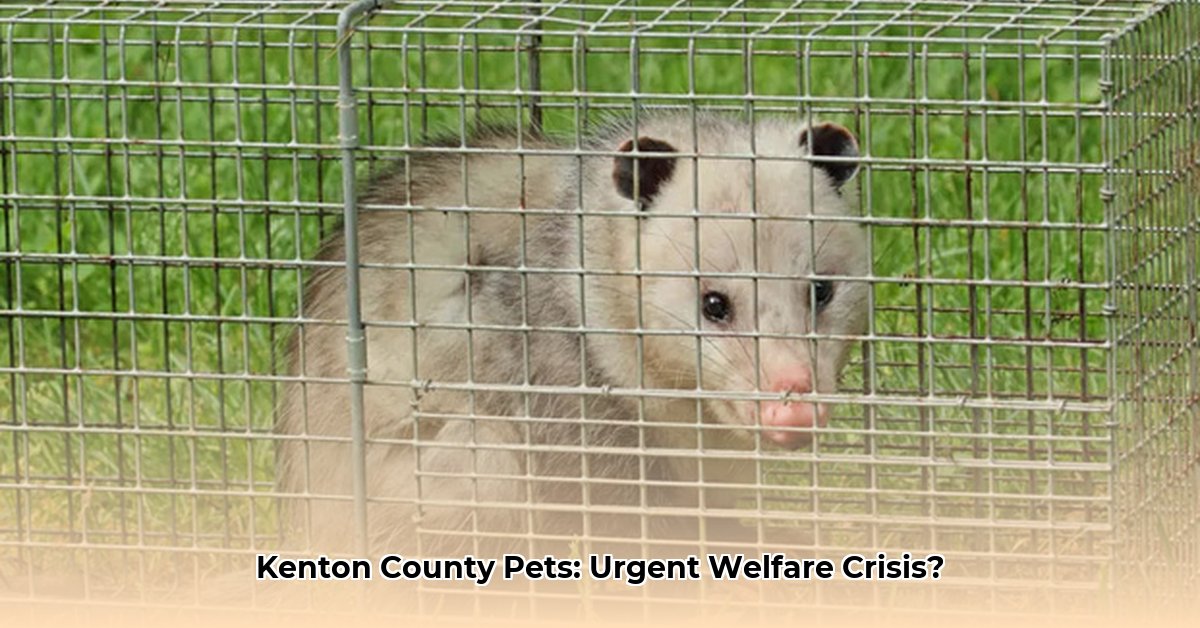
Kenton County Animal Services (KCAS) plays a crucial role in our community, balancing animal control with shelter operations from a single location: 1020 Mary Laidley Drive, Covington, KY. While this integrated approach could boost efficiency, KCAS currently faces significant challenges hindering its ability to provide optimal care and community safety. This article examines these challenges, explores stakeholder perspectives, and proposes actionable strategies for improvement. For more information on animal attacks, see this helpful resource.
Understanding Kenton County Animal Services' Current Operation
KCAS's dual mandate—animal control and sheltering—requires a multifaceted approach. Animal control officers respond to a wide range of calls, from stray animals to confirmed cases of animal cruelty. Their work demands quick thinking, compassion, and knowledge of animal behavior. At the shelter, staff provide daily care: feeding, cleaning, medical attention, and socialization for animals awaiting adoption. Many arrive injured or traumatized, requiring specialized care. Both units, however, lack crucial data to understand their overall effectiveness. How many animals enter the shelter annually? What's the actual adoption rate? This lack of quantifiable data makes it difficult to measure success and identify areas needing improvement. Isn't it vital to have this information to ensure we are using resources effectively?
Challenges and Opportunities for Improvement
Several key challenges hamper KCAS's effectiveness. The most pressing is the absence of a comprehensive data management system. Without reliable data tracking key performance indicators (KPIs), such as animal intake, adoption rates, and response times, it's impossible to objectively assess efficiency or pinpoint areas needing improvement. In fact, a recent internal review revealed a significant gap in tracking crucial metrics. This lack of accurate data hampers strategic planning and resource allocation.
Another challenge involves staffing levels. Are current resources sufficient to meet the demands placed upon the system? A thorough assessment considering both animal control officers and shelter staff is needed, determining whether additional personnel are required or if focused training could improve workflow and efficiency. Also, the synergistic potential of having both units in one location remains largely untapped. Lack of streamlined communication and coordinated strategies limits the effectiveness of this integrated system.
Finally, public awareness could be significantly improved. Many residents may be unaware of KCAS's services, resources, and initiatives. Increased public engagement through educational campaigns about responsible pet ownership, pet licensing, and the importance of spaying/neutering could substantially improve animal welfare and reduce the burden on the shelter.
Stakeholder Perspectives: A Collaborative Approach
Effective change requires the input of all stakeholders. Animal control officers highlight the need for better data collection, improved communication systems, and access to up-to-date technology to build stronger cases. Shelter staff emphasize the need for increased resources (staff and supplies) to provide optimal care and increase the adoption rate. Meanwhile, county government is called upon to allocate sufficient funding and support strategic planning for KCAS's operations. Ultimately, residents want a safe, humane, and effective animal welfare system reflecting community values. Listening to and incorporating these diverse perspectives is essential for building a more effective KCAS.
Recommendations and Future Directions: A Data-Driven Approach
To improve KCAS's effectiveness, a multi-pronged, data-driven approach is essential. This involves:
Implementing a Comprehensive Data Management System: Developing a robust system to track key KPIs (animal intake, adoption rates, response times, etc.) will provide crucial insights into the system’s efficiency.
Conducting a Staffing Needs Assessment: A thorough analysis is necessary to determine the optimal number of animal control officers and shelter staff, accounting for the workload and projected needs.
Optimizing Operational Efficiency: Improving communication and coordination between animal control and the shelter, potentially through a unified management structure.
Launching a Public Awareness Campaign: Engaging the public through educational campaigns is essential, promoting responsible pet ownership and highlighting KCAS's services.
Conclusion: Building a Brighter Future for Animals and Community
Kenton County's animal welfare system has the potential to be a model of efficiency and compassion. By prioritizing data-driven decision-making, strengthening internal collaboration, and fostering community engagement, we can create a system that effectively protects both animals and the community. The path forward involves a commitment to collaboration, transparency, and a shared vision for a more humane and effective animal welfare system. This proactive approach will not only improve services but also strengthen the bond between the community and its animal companions.